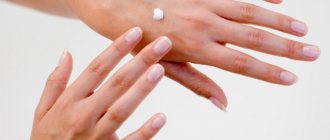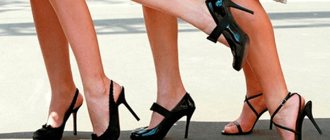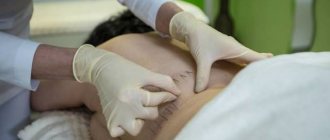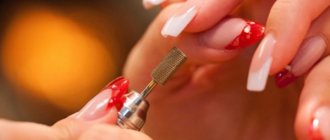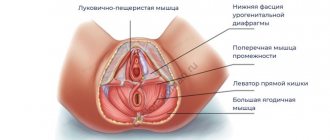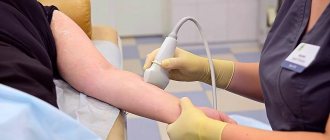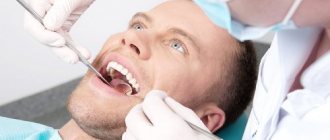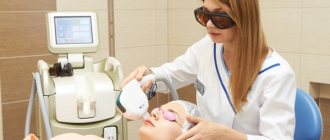Limb replantation
is a surgical operation to reattach a partially or completely severed segment of a limb by suturing blood vessels, connecting damaged nerves and bones, and further restoring blood circulation in the attached part of the body. Revascularization of the extremities implies restoration of its vascular system. There are micro- and macro-replantation. The main criterion for performing limb replantation is the functional feasibility of this operation, i.e. after its implementation, the main goal of replantation should be achieved - the most complete restoration of limb function (the possibility of restoring sensitivity). In emergency situations, victims ask the question: “Is it possible to reattach severed/severed fingers and preserve the functions of the hand?” Yes, thanks to the capabilities of modern surgery and microsurgery while ensuring proper preservation of the segment, this has become possible.
What is toe shortening
Toe shortening is a procedure in which it is possible to eliminate excess length or abnormal structure of this area. The operation involves eliminating the defect and restoring the functionality of the department.
Concept
This procedure is most often of an aesthetic nature, although sometimes it is prescribed for medical reasons, for example, with constant friction, pain in the fingers, overgrowth of cartilage and bone tissue. Most often, people with “Greek foot” turn to it, in which the second toe protrudes too much compared to the rest, but such a defect can also appear on neighboring ones, or even on several.
In addition to aesthetic reasons, they may also apply due to:
- Inability to wear high-heeled shoes;
- Feeling of discomfort with any type of shoes;
- Congenital or acquired after injury anomalies of the phalanges;
- Deformation of fingers under the influence of internal and external causes.
Based on this, the type of operation is selected. However, the impact may differ.
Kinds
In the process of reducing toes, use any of the following methods. Depends on the severity of the defect and the specific finger. This is how it is used:
- Osteotomy of the metatarsal bone with abnormal length;
- Osteotomy of the phalanx with a pronounced length of the whole part;
- Osteotomy of the phalanx and metatarsal bone, if there is a painful corn and hammertoe deformity (most often with severe transverse flatfoot);
- Arthrodesis of the proximal interphalangeal joint for severe hammertoe finger deformity with accompanying stiffness. It is also used if the patient wishes to wear only dress shoes.
Indications
Indications for use are factors such as:
- Aesthetic requirements for the appearance of the foot and toes;
- Congenital defects in the structure of the fingers;
- Acquired defects in the structure of the fingers;
- Deformations caused by diseases or other reasons;
- Permanent finger injury;
- Desire to wear open high-heeled shoes.
Contraindications
Contraindications for which surgery is not performed:
- Blood clotting disorder;
- Infectious pathologies in the area of intervention;
- Diabetes;
- Oncological pathologies;
- Disturbances in the functioning of the cardiovascular system (including CHF, AHF);
- Obesity;
- Epilepsy;
- Impaired blood circulation during innervation of the foot;
- Hypersensitivity to the composition of anesthesia and other drugs;
- Thrombophlebitis.
Combined procedure to lengthen the third and fourth toes and reduce the size of the second (before and after photos)
Comparison with similar techniques
If we talk about such methods, then an analogue is the use of conservative methods, for example, the use of special accessories such as silicone or rigid clamps, hinge devices. They can reduce the manifestations of a number of defects, but they cannot completely eliminate or make the fingers much shorter.
Long toes
Too long toes are a relatively common anatomy and tend to be a cosmetic concern for women more often than men. The most common is the long second toe. The so-called Greek foot type. Girls and women are often embarrassed by such features of their feet. They do not wear open shoes and generally narrow ones, which can lead to the formation of a hammertoe deformity of the 2nd toe and a painful callus in the projection of the proximal interphalangeal joint. Because the second toe suffers from repetitive microtrauma in closed shoes.
Pain often manifests itself in tight, ill-fitting shoes. Painful calluses on the fingers can prevent you from wearing stylish shoes even for a short time (1-2 hours a day).
Of course, other toes may also be too long. For example, abnormally long first, third or fourth toes.
Carrying out
The procedure requires some preparation. This is especially true in cases where there are contraindications that are revealed during the examination. In such cases, you need to first undergo therapy for the underlying disease, and then agree on surgery.
Necessary tests and measures
A general diagnosis is carried out, which consists of:
- General clinical blood and urine tests;
- Blood biochemistry;
- ECG;
- Fluorography;
- Tests for HIV, AIDS and syphilis;
- Coagulograms;
- X-ray of feet.
Anticoagulants and other medications that affect blood composition are stopped approximately two weeks before surgery. During the same period, quit smoking and alcohol.
Be sure to follow a gentle diet.
Algorithm
The operation itself takes about an hour. Many patients compared it to going to the dentist, as local anesthesia is administered, during which the patient remains conscious and hears everything the doctor does. No pain is felt. Work on one finger takes about half an hour. If several elements need to be processed, manipulations may take longer.
It is carried out according to the following algorithm:
- General anesthesia or epidural is used;
- An incision is made in the area of manipulation;
- Excess tissue is removed through access;
- The bones are connected with a screw;
- The skin is sewn together.
In the case of correction of hallux valgus deformity, the procedure may differ. An incision is made at the base of the big toe on the sole side. The joint is cleared of growth, and a section of wedge-shaped bone near the middle phalanx is removed. Next, the finger is moved to its normal position and secured with a screw.
Possibility of combination with other types of plastics
Any of the types of this operation can be combined depending on the indications. Thus, osteotomy can be performed simultaneously on the metatarsal bone and phalanges. Arthrodesis of the interphalangeal joint affects not only the joint capsule, but also tendons and soft tissues.
During the operation, part of the skin may also be removed if there is excess skin. Pins must be installed to set the right direction for the bone healing process. To restore the correct axis of the finger, it is necessary to change the tendon system in the area of manipulation. In the case of hallux valgus, there is a risk of relapse, but as practice shows, symptoms after surgery are less pronounced.
Causes of long toes
1) Genetics (heredity) is the most common cause.
2) Progressive valgus deformity of the big toe, as a rule, manifests itself in the relative shortening of the first ray and, accordingly, the lengthening of the second ray of the foot. Although the absolute length of the bones does not change. It’s just that the first metatarsal bone deviated to the side (primus virus). In this case, of course, it is necessary to correct the deformity of the first metatarsal bone and then the relative length of the first toe (ray) will be normal.
3) Injuries to the flank of the fingers and metatarsals can cause shortening of one of the rays.
4) Developmental anomaly
The most common reasons for seeking help are:
• Pain on the tip of the finger • Painful calluses of the fingers • Difficulty in choosing shoes • Congenital anomalies of the feet • Acquired foot deformation • Aesthetic dissatisfaction with your foot
Rehabilitation
Rehabilitation is carried out in stages:
- For the first three days, it is advisable to walk as little as possible. It is better to take a lying position with your legs raised up on an elevated surface.
- For 2 weeks, movement is carried out with the help of crutches.
- The sutures are treated with antiseptics before the sutures are removed in 10-15 days and after until the wound surface is completely healed.
- Special fasteners are used.
- After a month, you can step on the treated areas, but only if you wear orthopedic shoes.
After 2 months, you can wear regular shoes, but without high heels, and dress shoes are allowed to be worn after 3-4 months.
Possibility of complications
Complications most often develop due to non-compliance with the rehabilitation regime, but in rare cases they can also occur due to poorly performed surgery. They usually appear in the form of:
- Bleeding;
- Tissue infection;
- Hematomas;
- Slow fusion of bone tissue;
- Chronic pain syndrome;
- Loss of sensitivity in the operated area;
- Displacement of bone joints;
- Unsatisfactory aesthetic appearance of fingers.
Reviews about this procedure
Most often, reviews of the procedure are positive, as the foot acquires an aesthetically pleasing appearance. It is possible to get rid of congenital and acquired anomalies, as well as joint deformities. In this case, in the end, patients could wear beautiful open shoes. The seams, as a rule, became discolored and became hardly noticeable.
Negative feedback concerned cases where the aesthetic appearance of the toes and feet did not coincide with expectations. There have been cases where a patient's operated fingers could not touch the floor while standing. In such cases, additional correction was required.
Amputee Conservation
Most often, operations are performed to replant extremities (replantation of a hand amputated proximal to the wrist joints or replantation of lower extremities amputated proximal to the ankle joints) and their segments - feet, hands, fingers. Replantation of the hand and replantation of the fingers are most often encountered in medical practice. But replantation of the nose, penis, scalp, auricle, etc. is also possible. When delivering an injured person to the hospital, it is necessary to ensure the safety and viability of the severed segment. To do this, the amputee must be properly preserved (the main method of preserving the amputee is to cool it to a temperature of +4°C; the amputee is placed in a plastic bag, which is placed in a bag with ice (snow) mixed with water). For each severed segment, its own period of viability is determined, during which it is possible to carry out replantation (for example, safety in hours at t up to +4°C is for: fingers - 16, hands - 12, shoulder, forearm, lower leg and foot - 6) .
Can it be done at home?
At home, you can try to correct the shape of your fingers using special clamps and other devices. They are also used during the rehabilitation period after surgery.
They allow you to keep the joints in a normal position, due to which the ligamentous apparatus and soft tissues correct their shape and force the joints to be in a normal position. But with severe deformations, such an effect will be ineffective and insignificant.
In this video with Elena Malysheva you will learn about the treatment of hallux valgus:
- Previous: Features of the performance and purpose of perinoplasty in women
- Next: Symptoms of gastrointestinal diseases: main groups of signs
Stages of replantation
- Primary surgical treatment of wounds (the goal is excision of all damaged tissues and corresponding shortening of the limb, removal of foreign bodies from the wound)
- Restoration of the bone skeleton (comparison of bone fragments for better fusion using various fixing structures)
- Restoration of vessels of the grafted limb (vessels are anastomosed under a microscope, plastic replacement of veins and arteries is possible)
- Reconstruction of the tendon-muscular system (the most responsible and important stage of the operation, on which the functional result largely depends)
- Nerve restoration (the goal is to strive for primary nerve restoration)
- Restoration of the skin (skin tension is unacceptable)
At the end of the operation, bandages are applied with mandatory observance of the necessary conditions for fixing the limb.
With multiple replantation of fingers, the sequence of all stages is maintained.
